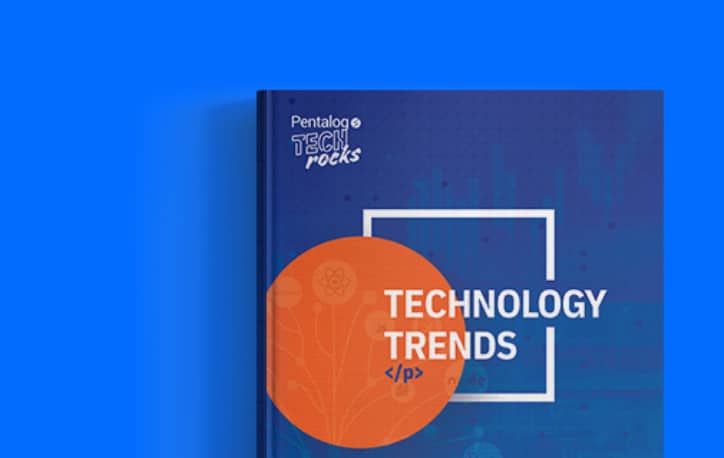Choosing a data quality platform is never straightforward.
On one side, you have feature-rich platforms like Ataccama that promise comprehensive data governance, observability, and master data management (MDM) capabilities. On the other, solutions like Data Ladder emphasize agility, user empowerment, and rapid deployment without sacrificing core matching and cleansing power.
For teams facing data quality challenges, understanding the tradeoffs between these platforms is critical. And we’re going to help you with that!
This Data Ladder vs. Ataccama guide breaks down the key differences in approach, usability, deployment, and value to help you pick the right fit for your team’s unique needs.
Governance-Driven or Execution-Led: Which Approach Fits Your Data Quality Needs?
Ataccama’s pitch is compelling: one unified platform to govern, cleanse, catalog, monitor, and master your data. With capabilities spanning data lineage, observability, and even a Snowflake-native quality app, Ataccama offers deep control across the data lifecycle.
If your organization is all-in on centralizing data governance and you have the resources and buy-in to support cross-functional stewardship and platform enablement, it can be a strategic asset.
Ataccama can also be used for more focused use cases without adopting the entire platform. The Ataccama One Data Quality module offers robust profiling, rule-based and AI-assisted matching, and transformation capabilities. However, even in such narrow (modular) deployments, some degree of alignment with platform components (like metadata models, catalogs, or governance policies) may still be involved.
This reflects Ataccama’s integrated architecture designed to maintain consistency – whether in full-scale or modular use.
While it does promise long-term scalability and governance, this architecture may feel like an overhead for teams with leaner structures or urgent timelines.
That’s where Data Ladder comes in.
Rather than tying matching, profiling, and cleansing to a larger governance stack, Data Ladder gives teams immediate control over their data quality, regardless of their infrastructure, use case, or industry. And it does so without requiring a specialized data engineering team or a long-term platform strategy.
To sum up, while Ataccama provides wide coverage across the data management lifecycle, Data Ladder delivers high-impact accuracy in one of the hardest and highest-impact areas, i.e., data matching and deduplication, with unmatched simplicity and speed.
If you’re looking for an Ataccama replacement for data matching use cases, Data Ladder is one of the best options.
Data Ladder vs. Ataccama: Two Approaches to Data Quality
| Feature/Capability | Ataccama (Ataccama One) | Data Ladder (DataMatch Enterprise) |
| Core Strength | Unified governance platform with AI-powered data quality, observability, MDM, and cataloging | High-performance data matching, deduplication, and cleansing |
| Setup & Deployment | Cloud, on-premise, hybrid. Modular deployment is possible, but often aligned with platform-wide metadata and policy components | Cloud, on-premise, hybrid. Rapid standalone deployment; deploy in a day, no coding, no platform lock-in, no re-architecture |
| Ease of Use | Modern, visual UI with increasing self-service capabilities; still often managed by IT/data governance teams | Intuitive, visual user interface designed for both business and technical users from day one |
| Matching Algorithms | AI/ML-assisted, rule-based, probabilistic and deterministic models, fuzzy/standardized rules via rulesets | Fuzzy, phonetic, exact, numeric, domain-specific; no-code rule creation |
| Time to Value | Quick setup for light deployments, longer ramp-up for full platform use | Immediate: import, match, validate, export – with no technical onboarding required |
| Transparency | AI-suggested rules with explainability layers; deeper logic visibility may require technical understanding | Fully transparent match logic; visual rule builder with real-time previews |
| Cost Structure | Enterprise pricing with modular licensing. Ataccama One pricing structure or licensing may include add-ons for AI observability, catalog, or MDM | Transparent pricing, fixed license cost. TCO for DME is up to 80% lower compared to other enterprise platforms |
| Governance/MDM/Lineage | Built-in; strong cataloging, lineage, observability, MDM | Not included; but it integrates into existing stack without enforcing metadata dependencies, making it ideal for teams seeking an Ataccama alternative focused on execution |
Strategic Differences That Affect Real-World Results
1. Execution vs. Architecture
| Ataccama | Data Ladder |
Ataccama’s vision is architectural. Though it can be used in focused scenarios, Ataccama One was essentially designed for organizations pursuing digital transformation through centralized governance. | Data Ladder’s tool – DataMatch Enterprise – is focused on execution: giving teams the power to profile, match, dedupe, and clean data quickly – without platform entanglement or depending on data engineers to configure rules. |
If you’re integrating data from four CRMs ahead of a go-to-market launch or consolidating records before migrating to a new ERP, execution beats architecture every time.
Data Ladder is the best Ataccama alternative when the priority is speed and ease of use without compromising accuracy. There’s no architecture dependency; just quick, execution-first workflows.
2. Matching Transparency
| Ataccama | Data Ladder |
Ataccama One uses AI/ML to suggest match candidates. This is a powerful feature but deeper logic tuning may require expertise. Though visibility has increased in newer versions, match decisions may still remain opaque without stewardship context. | In DataMatch Enterprise, every match rule is transparent, adjustable, and traceable. Business users can set thresholds, adjust weights, and preview results in real time – without any knowledge of coding. |
Ataccama’s AI-augmented logic can streamline suggestions and accelerate large-scale matching, but for regulated industries and audit-heavy workflows, Data Ladder’s direct rule logic offers easier business-level validation and its transparency enables trust.
3. Infrastructure Flexibility & Lock-In
| Ataccama | Data Ladder |
Though Ataccama’s flexibility is growing, especially with Ataccama Cloud and modular options, its tools are optimized to work best within Ataccama’s broader governance framework. That’s a strength in structured environments, but can introduce architectural overhead even in narrow use cases. | Lightweight, tech-agnostic, and flexible. It works seamlessly with SQL/NoSQL databases, Salesforce, HubSpot, Excel, flat files, and more – supporting hybrid ecosystems with plug-and-play connectors and REST APIs. No lock-in, no re-architecture required. |
This makes Data Ladder ideal – and a strong Ataccama alternative – for:
- One-off consolidation projects
- Rapid deduplication of incoming third-party data
- Ongoing match/merge jobs in data pipelines
- Teams needing agility and fast time-to-value
Ataccama is powerful, and though its modular adoption paths are improving, it still shines the most in well-structured, platform-aligned environments. Data Ladder not only offers standalone deployment, it also integrates into your existing tech stack, making it a powerful data matching tool to use with Ataccama.
When Ataccama Makes Sense
Let’s be fair, Ataccama is a strong choice for organizations that need deep governance or want to consolidate quality, cataloging, and master data workflows into a single, central stack. It works well for organizations that:
- Are centralizing data quality, lineage, MDM, and governance
- Have mature data management functions with cross-team ownership
- Need full lifecycle tracking, data observability, and metadata policies in one place
- Are standardizing on Snowflake and want native observability via Ataccama’s Snowflake-native app
In essence, Ataccama is ideal when governance is the problem you’re trying to solve.
When Data Ladder Is the Smarter Choice
Data Ladder is a better fit for organizations or teams that:
- Need to clean, deduplicate, or match large datasets quickly (DataMatch Enterprise has been tested on datasets with 100M+ records)
- Want both business users and technical teams to be able to configure rules
- Don’t have the time or resources to onboard a full platform
- Need fast ROI without long-term contracts or stack commitments
- Prioritize execution, transparency, and simplicity
Ataccama vs. Data Ladder: Real-World Use Case Comparison
| Scenario | Ataccama One | DataMatch Enterprise |
| Merging multi-source customer data | Accurate, but may require metadata modeling, domain configuration, and stewardship logic | Out-of-the-box match templates; configure match rules and run in hours |
| Preparing records for Salesforce migration | Can involve cataloging, governance policy setup, and lineage tracking | Load source files, define match rules, review results visually, and export clean records |
| Healthcare record deduplication across providers | High accuracy but may require metadata alignment and AI model tuning | Built-in match types for names, DoB, addresses, and IDs; easy rule customization, audit-friendly outputs |
| Ad hoc marketing list cleanup | Best suited for structured jobs; may feel heavy for quick turnaround or one-off tasks | Ideal for fast, visual deduplication and standardization; enables export of clean data instantly |
Solve the Problem You Actually Have
There’s nothing wrong with platforms – if your problem requires one.
But if you just need to clean and match messy data fast, a leaner alternative is a better choice.
It is a smart, lean data quality solution that offers:
- Fast deployment
- Transparent rule logic
- Accurate matching
- Flexible integration across sources and within your existing systems
No metadata overhead. No MDM dependency. And no platform buy-in or re-architecture required.
Just results you can understand and act on immediately.
Whether you’re prepping for a CRM migration, cleaning-up third-party data, or resolving entity duplicates across systems, DataMatch Enterprise gives you the speed, accuracy, and control you need – without any excessive baggage – making it the best Ataccama replacement for data quality use cases.
Want to see it in action?
Download a free Data Ladder trial or book a personalized demo with our expert and see how quickly your data problems shrink when you use the right tool for the job.
⚠️ Note for Transparency:
Ataccama also offers advanced features like data observability, semantic layers, a Snowflake-native data quality app, and AI-augmented cataloging, which can be valuable for enterprises with mature governance strategies. However, this post primarily focuses on data matching and cleansing, not full-platform governance, to help teams evaluating Ataccama alternatives for these specific use cases choose the best tool.
While Ataccama can serve focused use cases, its modules are designed to interoperate through shared metadata, catalogs, and policy engines, offering tight integration but potentially introducing overhead for teams focused solely on execution.
Frequently Asked Questions
1. What is the best Ataccama alternative for data matching and deduplication?
If you’re focused on fast, transparent data matching without the complexity of governance platforms, Data Ladder is one of the best Ataccama alternatives. It delivers no-code matching, fast deployment, and transparent logic – ideal for execution-led data quality initiatives.
2. Is Data Ladder a good replacement for Ataccama in real-time data matching workflows?
Yes. DataMatch Enterprise supports real-time matching via APIs and works well in data pipelines without requiring metadata alignment or platform-wide governance components.
3. Can Data Ladder be a good Ataccama replacement for one-off projects?
Absolutely. Unlike many other tools that require full-platform adoption, Data Ladder can be deployed quickly for ad hoc deduplication, data prep, or migration use cases – with no re-architecting.
4. How does Data Ladder compare to Ataccama in terms of pricing and total cost of ownership (TCO)?
Data Ladder offers flat, transparent pricing with no seat-based costs or usage limitations, while Ataccama’s enterprise licensing model can scale up quickly with add-ons. This makes Data Ladder a more cost-effective option – and an affordable Ataccama alternative – for many teams.
5. Does Data Ladder support AI-powered data quality like Ataccama?
While Ataccama uses AI/ML for suggestions, Data Ladder focuses on full transparency and business-rule control. It allows teams to define, preview, and trust the match logic – without requiring data science expertise.





































